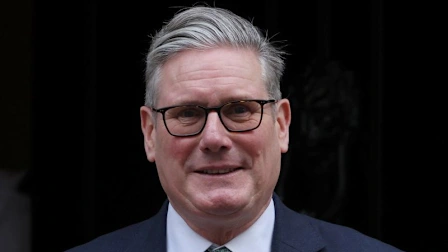Prime Minister Keir Starmer is facing one of the most turbulent moments of his leadership as deep divisions within the Labour Party have spilled into the open, testing both his authority and the unity of the government. What began as minor policy disagreements over spending priorities and immigration reform has now evolved into a widening rift between Starmer and a growing faction of Labour lawmakers.
Mounting Pressure Inside the Party
The trouble for Starmer started earlier this month when several senior Labour MPs voiced concerns about the government’s economic strategy. The Chancellor’s latest fiscal statement, which focused heavily on deficit reduction and long-term infrastructure spending, drew criticism from backbenchers who argue that it fails to address the immediate cost-of-living crisis facing millions of Britons.
One Labour MP, speaking anonymously, told reporters:
“We promised change, fairness, and relief for struggling families. But right now, it feels like we’re delivering spreadsheets, not solutions.”
While the Prime Minister has defended his policies as responsible governance after years of economic instability, his insistence on maintaining strict budget controls has alienated sections of his party’s progressive wing.
A Battle Over Identity
At the heart of this dispute lies a fundamental question: What kind of Labour Party does Starmer want to lead?
Since taking office, Starmer has sought to present Labour as a party of stability and competence, a clear departure from the ideological turbulence that marked previous years. His pragmatic, centrist approach helped the party reclaim power, but many MPs believe it has come at the cost of its traditional identity as the voice of working people.
Critics within Labour argue that Starmer’s cautious economic policies risk alienating core supporters in industrial towns and low-income communities. These voters were crucial in Labour’s resurgence during the last general election, and dissatisfaction among them could weaken the party’s standing ahead of upcoming local polls.
Public Sentiment and Party Image
Recent opinion polls show that while Labour remains ahead of the Conservatives nationally, Starmer’s personal approval ratings have dipped for the first time since taking office. Voters cite frustration with rising food prices, energy bills, and a perception that the government is moving too slowly to address inequality.
Political analyst Dr. Alan Price from King’s College London noted:
“Starmer’s challenge isn’t just policy management—it’s emotional leadership. People want to feel that their struggles are being recognized, not just calculated into fiscal reports.”
The Prime Minister’s communication team has reportedly launched a new outreach initiative aimed at rebuilding confidence among party activists and grassroots organizers.
Policy Flashpoints
The immediate trigger for the internal tension was Starmer’s cautious stance on immigration reform. His recent announcement of a ‘controlled migration policy’ designed to balance economic needs with border security drew mixed reactions.
Left-leaning members of Labour argued the plan echoed Conservative rhetoric, while moderates defended it as “realistic and responsible.”
Another point of contention has been the proposed cap on public sector pay increases, which unions describe as a betrayal of campaign promises. Teachers, nurses, and civil servants have warned of renewed strike action unless the government adjusts its offer.
The Role of the Opposition
Adding to the pressure, Conservative opposition leaders have been quick to exploit Labour’s divisions. The Shadow Chancellor accused the government of “abandoning working families” while failing to present a coherent growth plan.
In a fiery exchange during Prime Minister’s Questions, Starmer faced jeers from across the aisle as he defended his administration’s record on inflation, unemployment, and social housing. His composed but firm demeanor couldn’t mask the growing tension within his own benches.
Leadership and Loyalty
Despite the turmoil, Starmer continues to enjoy the backing of key cabinet ministers, including the Home Secretary and Foreign Secretary, who have called for “unity and focus” within the party. However, whispers of a potential leadership challenge—though speculative—have begun circulating in Westminster corridors.
Political insiders suggest that unless Starmer can quickly reassert his authority and reframe his narrative, dissent may harden into organized opposition.
The Balancing Act
Starmer’s predicament highlights the difficult balance every modern leader must strike: maintaining fiscal responsibility while delivering visible improvements to people’s lives. He has promised to protect the National Health Service, invest in renewable energy, and reform education—but critics say these ambitions are underfunded.
His supporters, however, argue that long-term stability is the foundation of social justice. They believe Starmer’s strategy will pay off by restoring credibility to British politics and preventing economic chaos.
Looking Ahead
The next few weeks will be crucial for the Prime Minister. The upcoming Autumn Budget Review will serve as both a policy test and a political reset. Advisors say Starmer is preparing to unveil a series of targeted relief measures to help low-income families and boost small businesses—a gesture aimed at silencing internal critics.
Moreover, Labour’s annual party conference next month will provide a stage for Starmer to rally his base and reassert his vision for the country. Observers expect him to double down on themes of competence, fairness, and unity, while acknowledging the frustrations felt within his ranks.
Conclusion
For now, Starmer’s leadership remains intact, but the cracks in Labour’s unity are undeniable. The Prime Minister’s ability to navigate this internal storm will determine not only his legacy but also Labour’s credibility as the party of government.
In an era of polarized politics, holding a divided party together may prove to be Starmer’s toughest challenge yet. Whether he can transform tension into teamwork will define the next chapter of his leadership—and perhaps the future of Britain’s political landscape.



